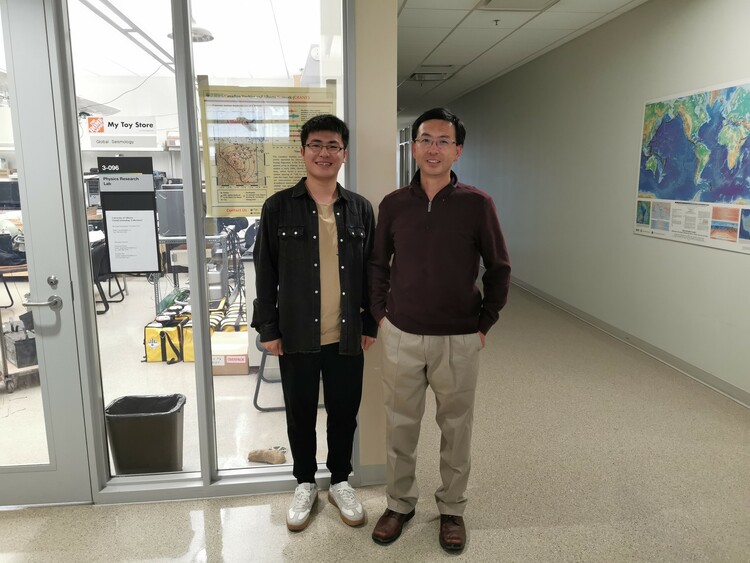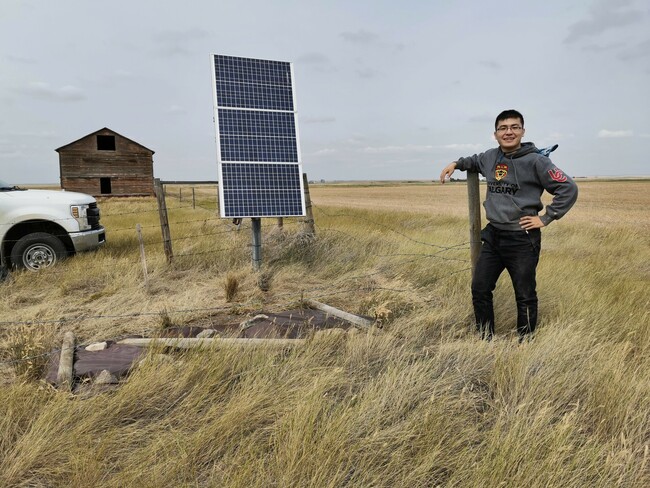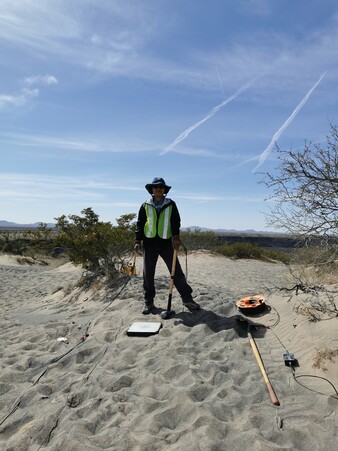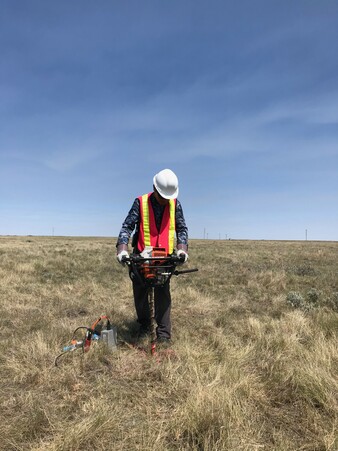From Earth to the outer planets
Posted on
Dr. Jingchuan Wang (left) with Dr. Jeffery Gu (right)
From studying carbon storage within the Earth’s subsurface led FES alumnus to a dream position on a NASA project building a deeper understanding of other planets.
Dr. Jingchuan Wang began his post-secondary journey at the China University of Petroleum. After completing the first two years of a geophysics program, he moved to the University of Calgary to continue his degree.
“It was definitely a challenge, moving to a new country and finishing my degree in a different language. But it was a decision I knew I had to make, and I’m so glad I did.”
Once he’d completed his geophysics degree, Jingchuan decided to advance his academic journey as he applied for a masters program at the University of Alberta.
Jingchuan was admitted to the University and studied under Future Energy Systems researcher Dr. Jeffrey Gu, but after one year, Jingchuan switched into the PhD program. He spent the rest of his degree studying multi-scale investigations of internal processes and structures of the Earth. He had taken a particular interest in smaller-scale processes of the injection of carbon dioxide: the sequestration part of carbon capture, utilization, and sequestration (CCUS) technology, as well as a broader regional geologic context.

Jingchuan’s research uses conventional and novel imaging methods to understand what’s happening underground. During his doctoral studies, he participated in experiments that involved injecting a small amount of liquid CO2 into the ground. Pulling from his geophysics background, he used seismic monitoring to understand the structural impact and observe any consequential effects of injectivity, including leakage.
As he neared the end of his doctoral research, Jingchuan already had his heart set on becoming a career researcher: “I’ve always been interested in becoming an independent researcher and I knew I wanted to stay in academia.”
After completing his PhD, Jingchuan applied to a postdoctoral position at the University of Maryland and was successful. Now, he’s working on the team of Geophysical Exploration of the Dynamics and Evolution of the Solar System, a project funded by the National Aeronautics and Space Administration (NASA) and is extending his knowledge out of this world—literally. Jingchuan is dipping his toes into planetary seismology to map the subsurface on planets and celestial bodies in our solar system to identify natural resources that will enable future human space exploration. One current focus is exploring naturally-occurring lava tubes on the moon and their potential as housing for astronauts.
“We’re using seismic waves to understand geological processes, tectonics, and a planet’s interior composition,” Jingchuan explains. However, one big challenge with planetary seismology is the lack of data: “We’re constantly working with very limited data, a challenge that’s complicated by the fact that for other planets, we’re working with data that came from an experiment 50 years ago. I’m part of a team that’s working to solve this. We're finding ways to improve our seismic imaging, data-processing, detection, and exploration capabilities in space.”
Even though Jingchuan’s current position is literal planetary science, under Dr. Jeffery Gu, Jingchuan’s research aimed to solve similar challenges back here on Earth. The 3D seismic survey imaging techniques used in carbon sequestration testing are limited to detecting seismic activity and structural changes only during controlled seismic activity, like well-drilling.
Instead, the research team turned to novel passive seismic imaging to detect structural changes and monitor seismic activity surrounding carbon injection sites. With passive imaging, seismic data is continuously gathered from earthquakes and other natural or industrial sources. This method gives experts a more complete insight into the subsurface qualities like containment, stability, and injectivity capacities for CCUS.
Although Jingchuan is still exploring what’s next for him, solving planetary seismology problems is enough for now. “I really like what I’m doing right now and it’s fantastic to be involved in a NASA project. Much of the research is data-oriented, and that’s the part I like. But it would be great to return to working with energy again one day.”


For more information about Future Energy Systems’ work with carbon capture, utilization, and sequestration (CCUS), seismic imaging for CCUS, Dr. Jeffery Gu’s work and more, check out the following links:
Carbon Capture, Utilization & Storage
GEODES - University of Maryland